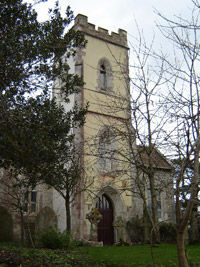
East Stoke

 |
East Stoke
|
 |
East Stoke is a rural parish in Dorset, England, straddling the wide flat valley of the River Frome, bisected by the main Weymouth-London railway and consisting of the settlements of East Stoke, Stokeford, Rushton, Highwood, Hethfelton, Binnegar, West Holme, Holmebridge and Woolbridge. Formerly the parish also included the detached areas of Belhuish and St. Andrews' farms near West Lulworth, and Bestwall and Swineham adjoining Wareham, but they were transferred to those respective parishes in 1888. At the time of Edward the Confessor, the principal landowner was Edmer, but after the Norman conquest it was held by the Earl of Moreton, eventually passing to the de Stoke family and their descendants, who held it for centuries until it was sold to Sir John Strode in the Elizabethan era. When Hutchins wrote his great opus, 'The History and Antiquities of Dorset', the principal landowners were the Oglanders, descendants of the Strode family. |
|
Historically the heart of the parish was centred on the 13th century church of St. Mary's, located in the flood meadows at East Stoke, but in 1828 a new church was built on higher ground at Stokeford, designed by Owen of Portsmouth. In 1988 the ecclesiastical parish of East Stoke was merged with that of Wool, and the church building was sold and converted into 3 private residences. Meanwhile the ruins of the ancient church still exist in a circular copse, although much overgrown. Primarily consisting of farmland, the parish also includes fen with reedmarsh, wet woodland and oak copse on the flood plain of the River Frome. The National Environmental Research Council (NERC) maintains a laboratory there, while 'The Monkey World' ape rescue centre lies within the western parish boundary. |
 |
The village of East Stoke itself, which consisted of 491 inhabitants in 2001, is situated along the main (A352) road between Wool and Wareham. The Stokeford Inn, formerly called The Black Dog, has been the village pub for over a hundred years and central to social life in East Stoke in the past. Most other village amenities have disappeared in the last 50 years, starting with the shop in the 1950s, the school in the 1970s, the garage in the 1980s and the post office in 2001. However, in 2007 the village hit the headlines as the first community to pass a vote calling for a referendum on the new EU reform treaty, exploiting a little-known provision of the 1972 Local Government Act, whereby a district council is obliged to hold a poll if 10 or more local people vote for it. If nothing else was achieved, the vote proved that East Stoke was not moribund. |
|
The OPC for East Stoke is Kim Parker |
|
| Census | 1841, 1851, 1861,
1871 1881, 1891, 1901, 1911 |
| Parish Registers * [* 22 Mar 2014. Please note that the Parish Register transcripts have been completely reworked by Kim Parker and we have now replaced the previous transcriptions donated by Barry Chinchen] |
Baptisms 1731-1812, 1813-1863, 1863-1911 Marriages 1731-1836, 1837-1920 Burials 1732-1812, 1813-1909 |
| Postal Directories | Kelly's Directory |
| Photographs | Photographs of the Church |
| Useful Links | |
| Other information | Methodist
Baptisms 1813-1837 Parish Clergy Overseers of the Poor Records Index Protestation Return for East Stoke 1641 East Stoke Probate records [major update 23 Mar 2014] East Stoke in Hutchins Roll of Honour Tudor Subsidy Rolls 1523, 1543 & 1593 The Will of Samuel Skinner, Gentleman of Woollbridge 1712/13 [pdf] |
| Maps | |
| Records held at the Dorset History Centre Registers |
Christenings 1743-1983. Marriages 1745-1969. Burials 1742-1909 |
Visitors to Dorset OPC
Copyright (c) 2025 Dorset OPC Project